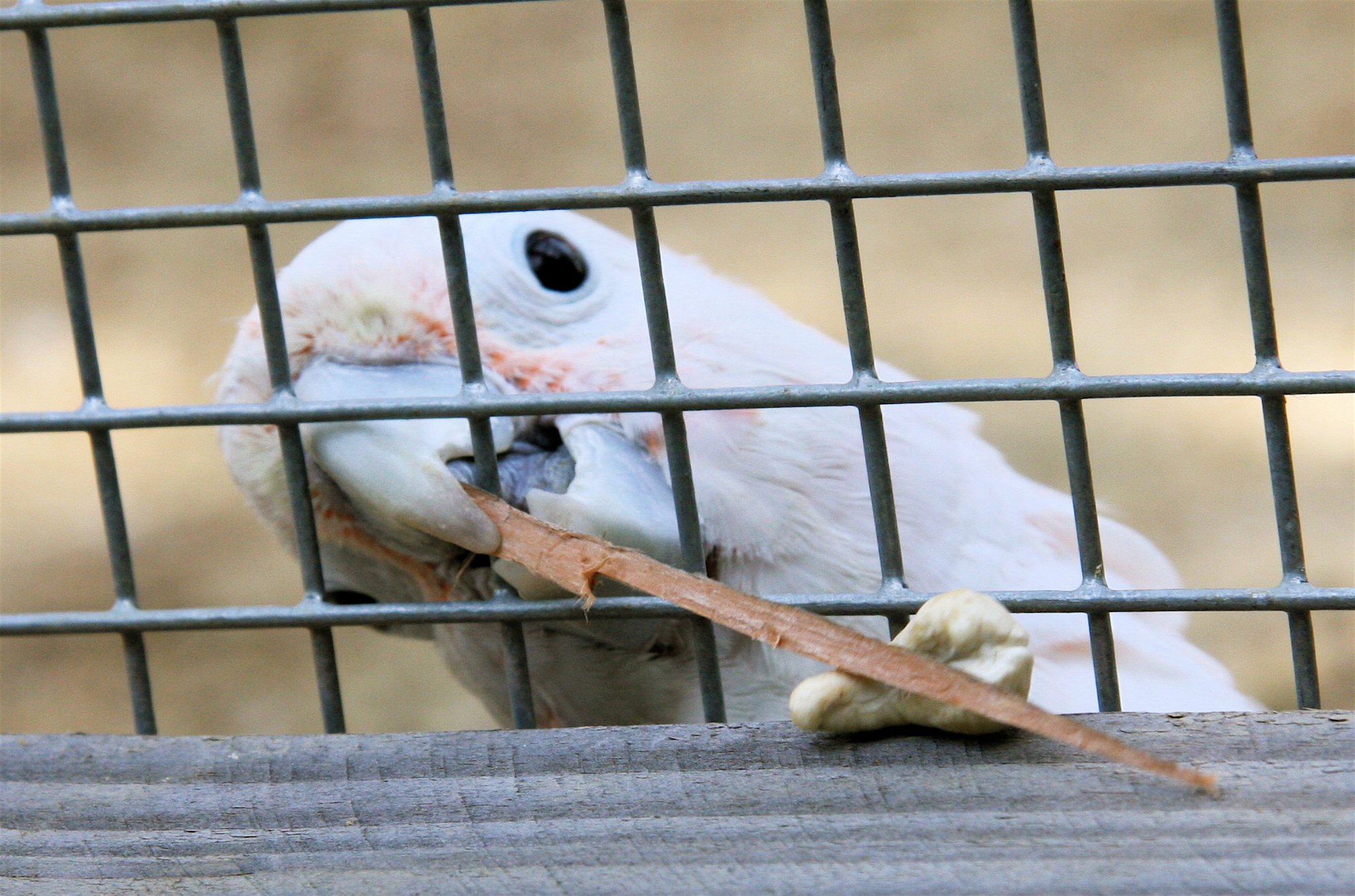Clever Cockatoo Invents Tools to Reach Food

Parrots are not known to use tools in the wild, but scientists say they've observed a captive Goffin's cockatoo named Figaro crafting implements to snatch food that's just out of reach.
Figaro was spotted playing with a pebble in the aviary where he lives at a research facility near Vienna, and at one point, the bird dropped the stone outside the mesh of his caged enclosure. When he couldn't reach the pebble with his beak or claw, Figaro grabbed a small stick to fish for the stone, the researchers say.
"To investigate this further we later placed a nut where the pebble had been and started to film," said Alice Auersperg of the University of Vienna. "To our astonishment he did not go on searching for a stick but started biting a large splinter out of the aviary beam. He cut it when it was just the appropriate size and shape to serve as a raking tool to obtain the nut. It was already a surprise to see him use a tool, but we certainly did not expect him to make one by himself."
Auersperg said Figaro successfully got the nut each time they placed it just outside of his reach, and almost every time, he fashioned a new tool or modified an old one to be the right shape and size for the task. [See Photos of the Crafty Cockatoo]
Researchers say it is not clear how Figaro learned to invent tools, but they believe their observations show that large-brained, problem-solving species may have the capacity to make and use tools spontaneously even if they don't do so habitually.
"Even though Figaro is still alone in the species and among parrots in showing this capacity, his feat demonstrates that tool craftsmanship can emerge from intelligence not-specialized for tool use," said researcher Alex Kacelnik of Oxford University. "Importantly, after making and using his first tool, Figaro seemed to know exactly what to do, and showed no hesitation in later trials."
Kacelnik has previously led studies on New Caledonian crows, which are expert tool-makers in the wild and seem to hone their craft by learning from elders. But in one case much like Figaro's, Kacelnik observed a New Caledonian crow named Betty inventing an unprecedented kind of wire-hooking tool to retrieve out-of-reach food.
Get the world’s most fascinating discoveries delivered straight to your inbox.
"We confess to be still struggling to identify the cognitive operations that make these deeds possible," Kacelnik said. "Figaro, and his predecessor Betty, may help us unlock many unknowns in the evolution of intelligence."
The research appears this week in the journal Current Biology.
Follow LiveScience on Twitter @livescience. We're also on Facebook & Google+.



